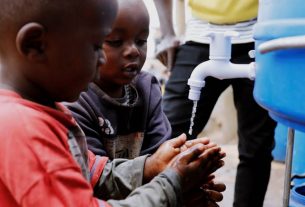Sun 01 October 2023:
Coffee is one of the most widely consumed beverages in the world with an estimated two billion cups consumed each day.
To recognise the work of millions of coffee farmers, producers and baristas from all over the world, every year on October 1, the world celebrates International Coffee Day.
This year’s theme is “promoting the right to a safe and healthy working environment in the coffee supply chain”.
In this infographic series, Al Jazeera visually presents the coffee production process, outlines the various types of coffee and showcases the top coffee-producing nations around the world.
How is coffee produced?
Coffee consumption is thought to have its origins dating back as far as the ninth century in the region that is now Ethiopia in East Africa, where wild coffee plants grew naturally.
The invigorating drink then spread to other regions across the Arabian Peninsula, such as Yemen and by the 15th century, coffee cultivation and preparation methods had developed to become an integral part of the culture.
Coffee trade expanded across the Middle East and made its way to Europe by the 17th century through trade routes across Italy.
Although they may resemble beans, “coffee beans” are actually the seeds of the coffee fruit which are found in pairs inside a red coffee cherry. It takes about three to four years for a coffee plant to bear its first harvest.
The infographic below breaks down the coffee production process:

What are the different types of coffee?
There are two main types of coffee beans used in commercial coffee production – Arabica and Robusta.
Arabica is the most widely consumed form of coffee beans accounting for between 60 to 70 percent of global coffee production. Arabica is known for its fine, mild aromatic properties and is generally considered a higher-quality coffee bean compared to Robusta coffee.
Robusta is known for its bold, strong and often bitter taste. Robusta beans have a higher caffeine content compared to Arabica and are usually cheaper to cultivate. Robusta is named after its robust properties and resistance to spoilage which makes it ideal for use in instant coffees.

The top coffee-producing countries
In 2020, the world produced about 10.7 million metric tonnes of coffee beans according to the UN’s Food and Agricultural Organization.
Brazil is the world’s largest producer of coffee, producing about one-third (3.7 million tonnes) of global production. The South American country’s vast and diverse landscape provides an ideal environment for coffee cultivation allowing it to grow both Arabica and Robusta coffee varieties.
Vietnam, with 1.8 million tonnes, is the world’s second-largest coffee producer followed by Colombia (830,000 tonnes), Indonesia (770,000 tonnes) and Ethiopia (580,000 tonnes).
Combined, these five countries account for nearly 75 percent of the world’s coffee production.
The animation below shows the top coffee-producing countries in 2000-2020.
______________________________________________________________
FOLLOW INDEPENDENT PRESS:
TWITTER (CLICK HERE)
https://twitter.com/IpIndependent
FACEBOOK (CLICK HERE)
https://web.facebook.com/ipindependent
Think your friends would be interested? Share this story!





